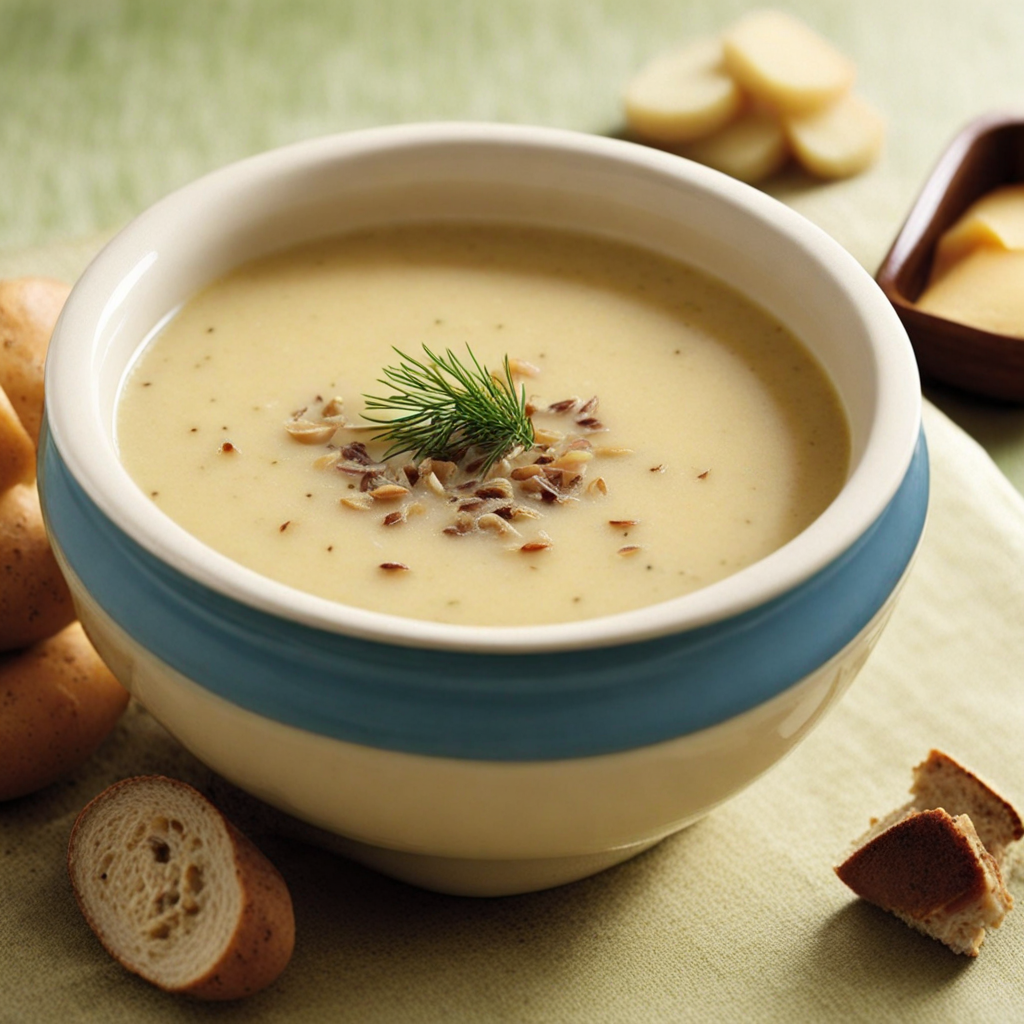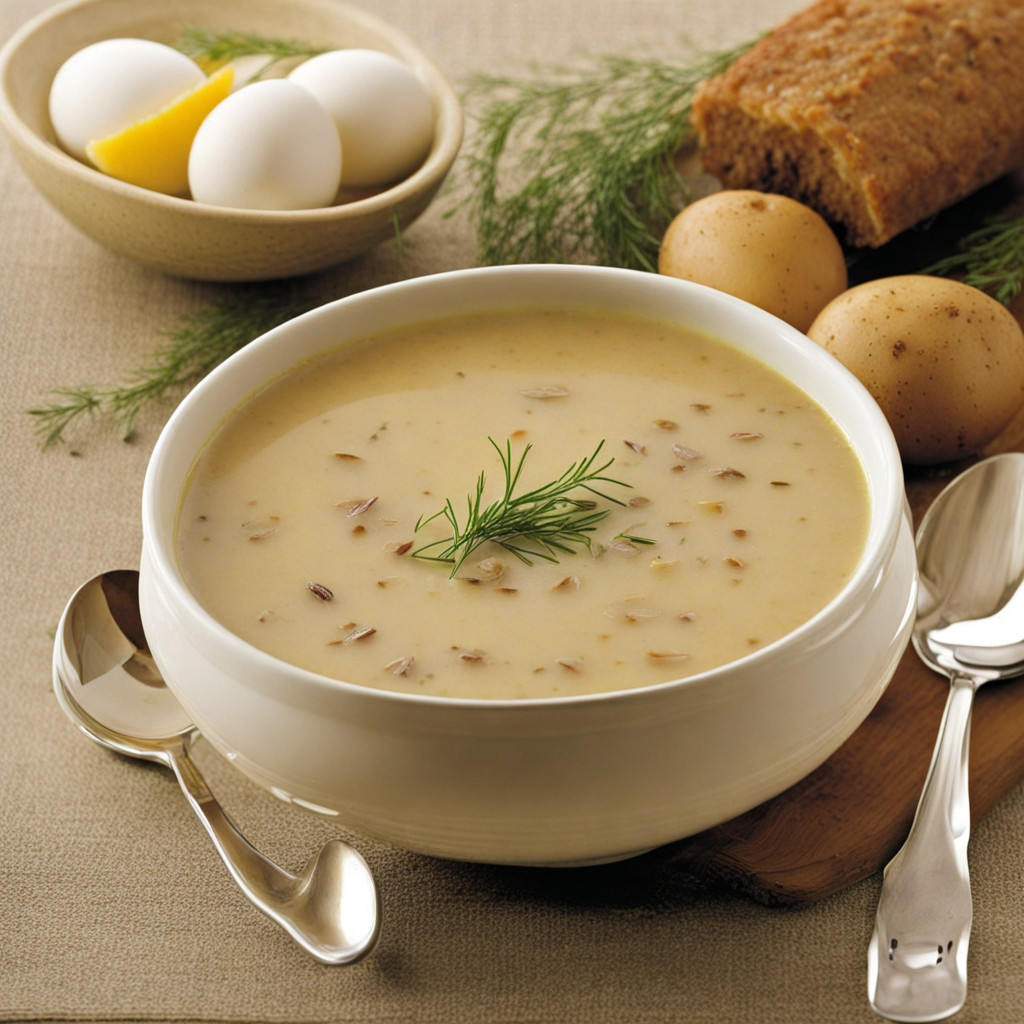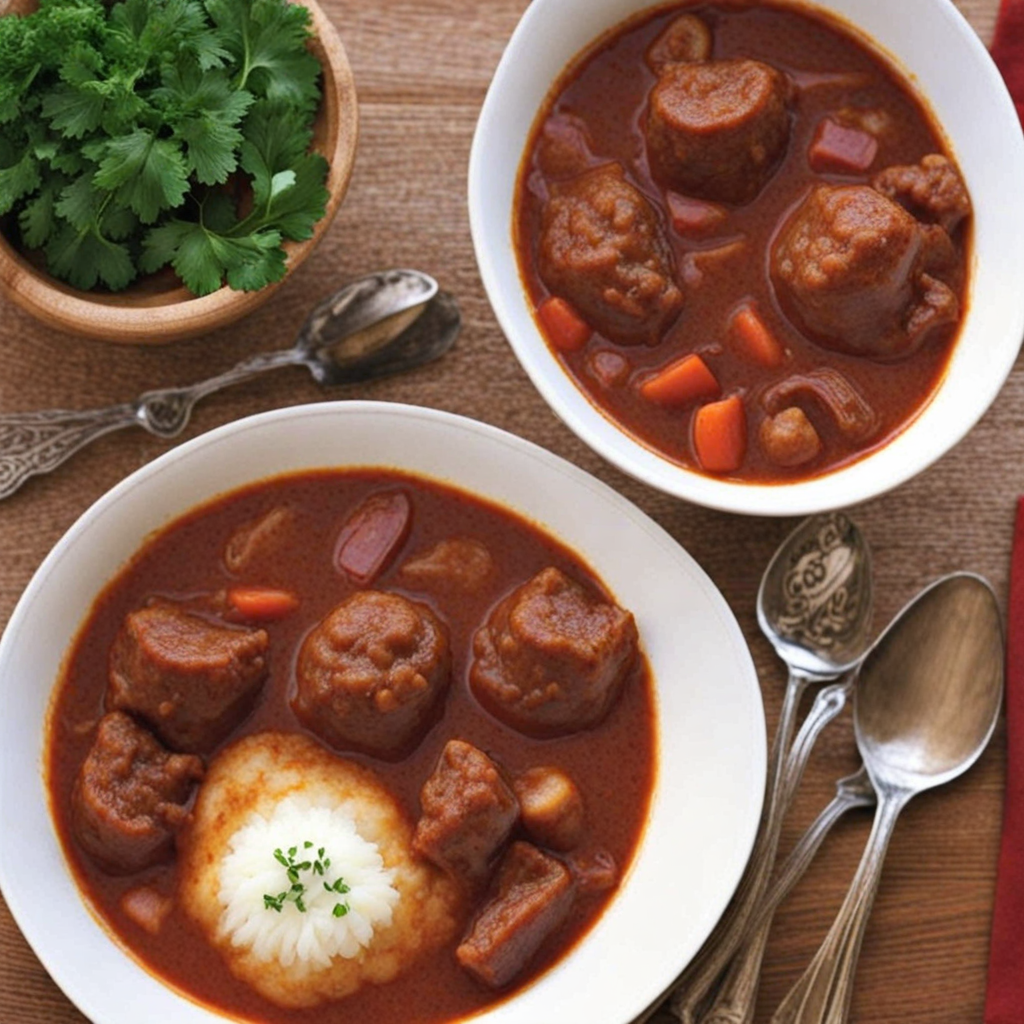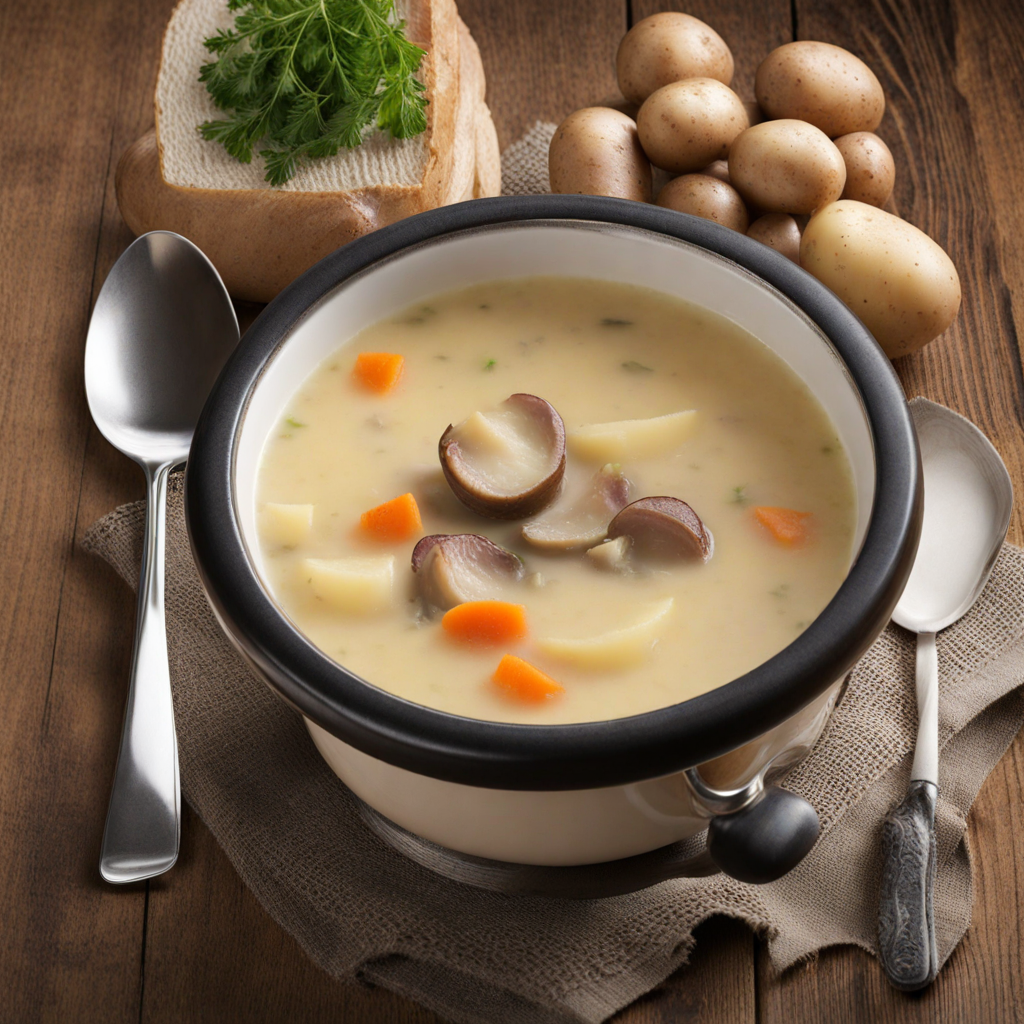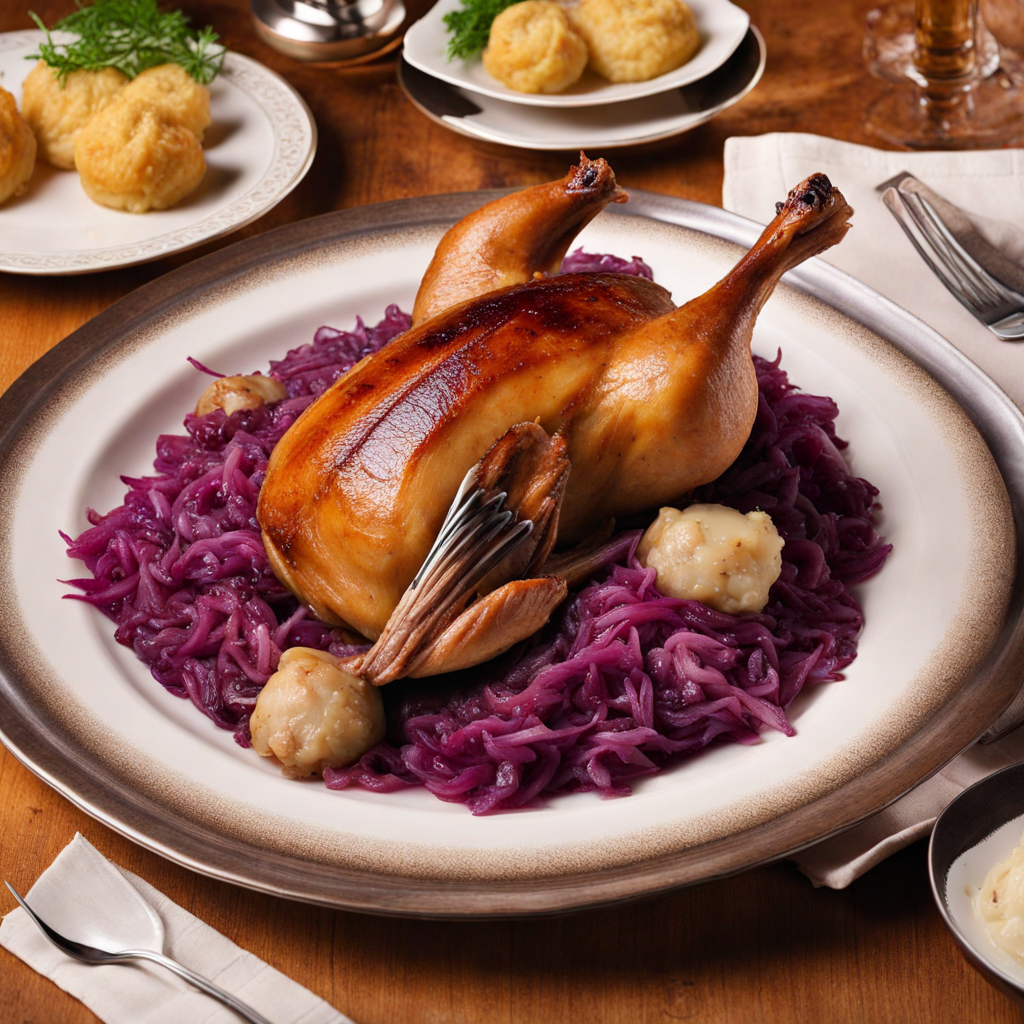Caraway Soup
Caraway Soup is a delightful and aromatic dish hailing from the heart of the Czech Republic, showcasing the unique and earthy flavor of caraway seeds. This traditional Czech soup begins with a rich, savory base, typically made from sautéed onions and garlic, which creates a warm and inviting aroma. As the soup simmers, a blend of vegetables such as carrots and potatoes are added, enhancing the texture and providing a subtle sweetness that balances the dish. The star ingredient, caraway, brings a distinct anise-like flavor that is both comforting and slightly peppery, making each spoonful a flavorful experience that is deeply rooted in Czech culinary traditions. What sets Caraway Soup apart is its creamy consistency, often achieved through the addition of milk or cream, which envelops the spices and vegetables in a velvety texture. Some variations may even include a touch of flour to thicken the broth, providing a heartiness that is perfect for chilly days. The soup is typically seasoned with salt and pepper, allowing the natural flavors of the ingredients to shine through while the caraway seeds impart an aromatic finish that lingers on the palate. Served hot, Caraway Soup is often garnished with fresh herbs or a drizzle of cream, adding a visual appeal and a touch of freshness. It is commonly enjoyed as a comforting starter or a light main course, and pairs beautifully with crusty bread, making it a satisfying meal. This dish not only offers a taste of Czech heritage but also invites adventurous food lovers to explore the unique flavor profile of caraway, showcasing how a simple ingredient can transform a humble soup into a memorable culinary experience.
How It Became This Dish
Kmínová Polévka: A Culinary Journey Through Time in the Czech Republic #### Origins and Historical Context Kmínová polévka, or caraway seed soup, is a traditional dish deeply rooted in Czech culinary heritage. The origins of this soup can be traced back to the medieval period, around the 14th century when the Czech lands were part of the Kingdom of Bohemia. During this time, caraway seeds (known as "kmín" in Czech) were commonly used in various dishes, valued not only for their distinct flavor but also for their medicinal properties. The use of caraway in cooking is a testament to the agricultural practices of the region. The fertile soils of Bohemia provided an ideal environment for cultivating a variety of herbs and spices, including caraway, which thrived in the temperate climate. The spice was frequently mentioned in historical texts, underscoring its popularity. By the late Middle Ages, kmín had become a staple in the diets of common folk and nobility alike, signifying its broad acceptance and significance. #### Cultural Significance Kmínová polévka is more than just a dish; it embodies the rustic, hearty ethos of Czech cuisine. Traditionally served as a starter, it reflects regional cooking practices that prioritize simple, wholesome ingredients. The soup typically consists of caraway seeds, potatoes, onions, and sometimes cream, offering a delightful blend of earthy flavors and a warm, comforting texture. The soup holds cultural significance in various Czech customs and celebrations. It is often featured in family gatherings, weddings, and festive occasions, symbolizing unity and togetherness. In many households, the preparation of kmínová polévka is a cherished tradition passed down through generations, often prepared by mothers and grandmothers who have perfected their recipes over the years. Moreover, the soup signifies the Czech affinity for seasonal eating. In autumn and winter, when root vegetables like potatoes are plentiful, kmínová polévka offers a nourishing meal during colder months. It embodies the Czech philosophy of making the most of available ingredients, emphasizing sustainability and resourcefulness which have been intrinsic to Czech culture for centuries. #### Development Over Time As the centuries progressed, kmínová polévka evolved alongside Czech society and its culinary practices. By the 18th and 19th centuries, the soup began to gain prominence not only in rural households but also in urban centers like Prague. The Industrial Revolution brought about changes in food production and availability, leading to more widespread access to ingredients and culinary influences. During this period, the soup's recipe underwent various adaptations. While the traditional version remained popular, cooks began experimenting with different ingredients. Variations emerged that included the addition of smoked meats, such as ham or bacon, to enhance the flavor profile. Cream was also incorporated more frequently, creating a richer and creamier consistency that appealed to evolving palates. The 20th century brought about significant changes in the Czech Republic, particularly with the impact of World War II and the subsequent Communist regime. During these tumultuous times, food scarcity and restrictions on ingredients forced many families to adapt their recipes. Kmínová polévka became a symbol of resilience, with families crafting their versions of the soup using what was available, often substituting ingredients based on rationing. This adaptability only deepened the soup's cultural resonance, as it became a comfort food that reminded citizens of home and tradition amid adversity. #### Modern Interpretations In contemporary Czech cuisine, kmínová polévka enjoys renewed interest, particularly among chefs and food enthusiasts who seek to honor traditional dishes while incorporating modern culinary techniques. Today, the soup is often featured on menus of both rustic eateries and upscale restaurants, showcasing the versatility of this beloved dish. Modern interpretations may include gourmet twists, such as the addition of truffle oil, artisanal breads for dipping, or pairing with local craft beers. The presentation has also evolved, with chefs focusing on aesthetic appeal, often garnishing the soup with fresh herbs or a drizzle of cream to elevate its visual and gastronomic experience. Moreover, kmínová polévka has found its place in the global culinary scene as Czech cuisine gains more recognition. Food festivals and culinary events celebrating regional dishes have emerged, allowing kmínová polévka to be shared with international audiences. This exposure has led to a growing interest in Czech culinary traditions, with many people eager to learn about and recreate the soup in their own kitchens. #### The Future of Kmínová Polévka As sustainability and local sourcing become increasingly important in the culinary world, kmínová polévka stands as a model for responsible cooking. The emphasis on using seasonal ingredients aligns with contemporary food movements that prioritize environmental consciousness and support for local farmers. The soup's simplicity allows for creativity, enabling cooks to experiment with a variety of fresh, local vegetables while staying true to its traditional roots. In the Czech Republic, there is a growing movement to preserve traditional recipes and educate younger generations about their culinary heritage. Kmínová polévka, as a beloved staple, plays a vital role in this educational endeavor. Cooking classes and workshops centered around traditional Czech dishes are becoming more popular, ensuring that this soup—and its associated cultural significance—remains alive and well. #### Conclusion Kmínová polévka is more than just a soup; it is a reflection of the Czech people’s history, culture, and resilience. From its humble origins in the medieval kitchens of Bohemia to its place on modern tables, this dish has adapted and thrived through the ages. It is a culinary symbol that encapsulates the essence of Czech hospitality, warmth, and the enduring importance of family traditions. As the world continues to change, kmínová polévka remains a steadfast reminder of the Czech Republic's rich culinary heritage, inviting people to savor not only its unique flavors but also the stories and traditions that have shaped it over centuries. The soup is a testament to the power of food in connecting us to our past while nourishing our present and future.
You may like
Discover local flavors from Czech Republic


